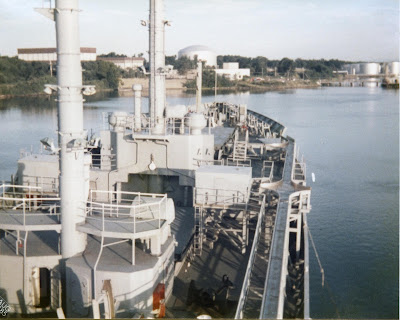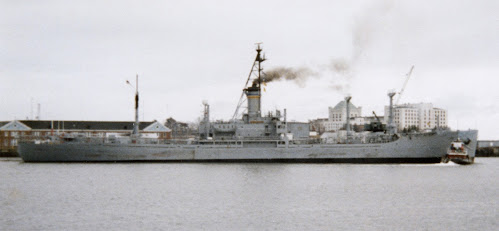A very long time ago, in the 1950s and 1960s, my family vacationed in Falmouth on Cape Cod in Massachusetts. Many New Yorkers flocked to Cape Cod every summer in search of peace and quiet, rest and relaxation, and uncrowded beaches. My parents and grandparents rented a cottage within easy walking distance of the beach on Vineyard Sound, and the six of us, including my brother and myself, stayed there for a couple of weeks every summer for several years. I was very young then, so I remember these vacations rather vaguely. What I remember better is my parents’ and grandparents’ subsequent reminiscences of these happy times.
Since then, I’ve scarcely given Cape Cod a thought, until quite recently. A few years ago, in September of 2015, Miss Patty and I had some family history business in southeastern Massachusetts, and when we had finished up in Buzzards Bay, we drove across the Bourne Bridge to the Cape on the spur of the moment. On this impulsive sojourn, we visited the historical society in Woods Hole and the lighthouse at Nobska Point. Favorably impressed, we agreed that we must return sometime for a longer duration.
This second and extended visit to Cape Cod took place last month, five years after the first. In three days we combined additional family history research with quiet moments at the waterfront Returning to Nobska Point on Tuesday morning, September 15, we took in the magnificent view of Vineyard Sound, the island of Martha’s Vineyard beyond, and the ferries Island Home and Martha’s Vineyard plying their routes between the mainland and the island. A pristine and peaceful location, Nobska Point silently invited us to linger and leave behind the cares and concerns of the world. This we could not do completely, however, as the site was tinged with tragedy. A bronze and stone monument surrounded by flowers and American flags commemorated the untimely death of Nellie Anne Hellernan Casey, a local resident who was killed in the terrorist attack of September 11, 2001. Very sad, of course, but also very fitting. The view of the sea beyond the memorial bespoke the necessary existence of a supreme Creator-God, and his revelation of the eternal Gospel gave assurance that his omnibenevolence would ultimately and inevitably prevail. An atmosphere of peace and serenity thus surrounded the site
I could have gladly spent most of the day at Nobska Point, basking in its quiet beauty and peacefulness . The strong, late summer Sun was becoming too much for Miss Patty, however, and we had additional ground to cover, too, so we needed to move on.
Mid-day found us briefly in Hyannis, visiting the John F. Kennedy Memorial that overlooked the port. Another beautiful site tinged with sadness, it also spoke silently of the Divine and exuded a sublime serenity. In the distance, the ferry Eagle sailed across the placid surface of Hyannis Harbor as she departed for Nantucket, asserting thereby that despite tragedy, the voyage of life would always continue.
These two spiritual havens on the Cape Cod seashore testified quietly of the Lord’s plan for his people, even in the face of tragedy. The scriptural admonition to “let your hearts be comforted” came to mind, “for all flesh is in mine hands; be still and know that I am God” (D&C 101:16)..
I have long thought of God in seafaring terms, as the Master and Chief Engineer of the universe. Recognizing him thus as the supreme authority has enabled me, when considering events too monstrous for the human mind’s limited understanding, to accept what he said through the prophet Isaiah: “as the heavens are higher than the earth, so are my ways higher than your ways and my thoughts higher than your thoughts” (Isa. 55:9). This counsel, coupled with the knowledge that we all came into this imperfect world to grow through experience and prepare for life in the perfect world hereafter, has given me a better understanding of the human condition and its ultimate purpose.
The next day, Wednesday the 16th, we needed to leave Cape Cod and return home to Nashua. Not too early, though, for I was in no hurry to pry myself away from the seashore. That morning, I arose before dawn and made the twenty minutes’ walk from the motel to the beach on Vineyard Sound. Few people were out and about at that time of day, so I had the waterfront almost entirely to myself. Sitting on a park bench and facing seaward, I spent an hour and more in the gradually growing daylight feeling the onshore breeze and watching the waves wash up on the sand and then recede. I would have been happy to remain there all morning. Watching the waves has always helped me to feel at peace in an often unpeaceful world.
Additionally, as I gazed seaward I thought of the family vacations of so many years ago. The cluster of nearby cottages where we had stayed was now mostly gone. For a moment I wondered if my parents and grandparents, all of them now gone as well, could see me back at the beach where we used to go swimming. After nearly six decades, I had returned to Cape Cod and rediscovered its peace and quiet, its rest and relaxation, and its uncrowded beaches. A perfect setting for a memorable spiritual experience!
Now I would like to share a few photographs. This first one shows yours truly at the age of two and a half on the beach in Falmouth in the summer of 1960. Six decades ago now!
Fifty-five years later, on Saturday, September 19, 2015, we see the Nobska Light at Nobska Point in Falmouth:
On the same day, looking seaward from Nobska Point, we watch as the ferry Island Home approaches the terminal in nearby Woods Hole at the end of her voyage from Martha’s Vineyard:
Same ship; different day. Here the Island Home sails in the opposite direction, toward Martha’s Vineyard, on Tuesday, September 15, 2020:
Same day; different ship. I’m not entirely certain, but I believe this is the Martha’s Vineyard, returning from her namesake island and bound for Woods Hole:
Next, we view with sadness the monument to the local victim of the terrorist attack of nineteen years ago:
Now in Hyannis later on the same day, we visit the memorial to President John F. Kennedy. Hyannis Harbor fills the background beyond the fountain and plaza:
Finally, watching from the JFK plaza, we view the ferry Eagle leaving Hyannis and beginning her voyage to Nantucket:


















